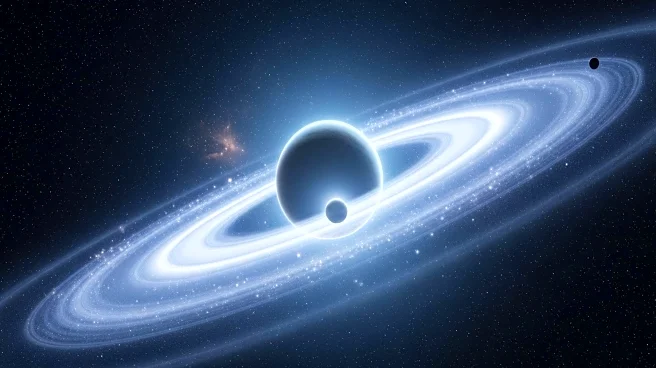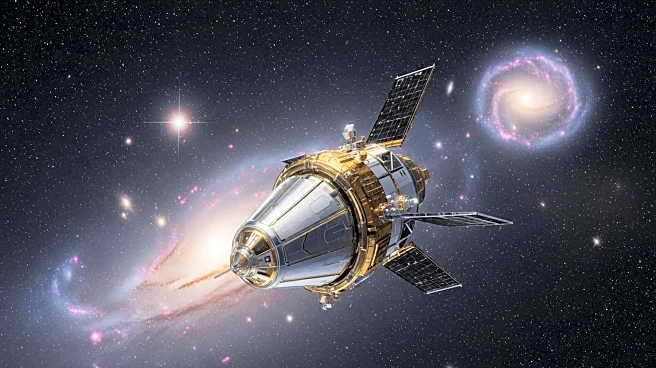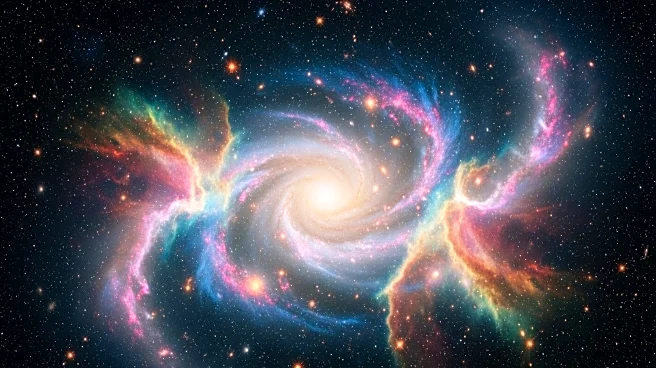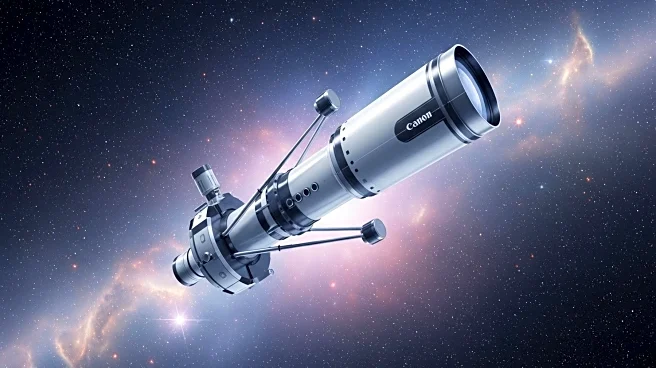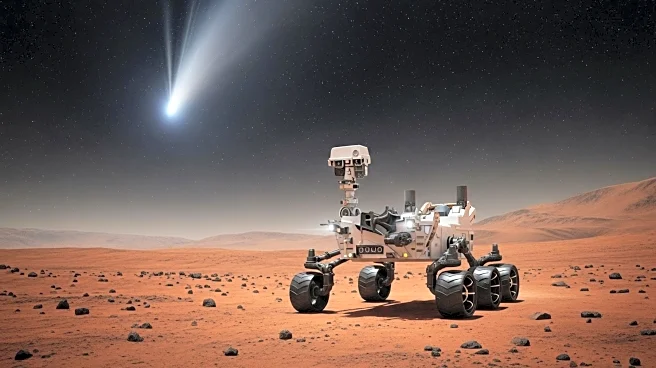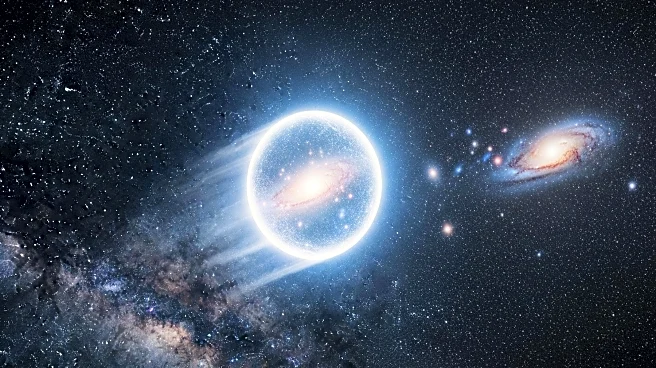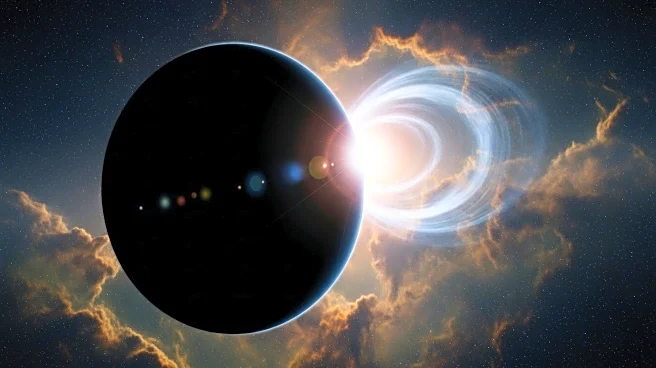What's Happening?
NASA's James Webb Telescope has provided the first direct measurements of a carbon-rich disk surrounding the exoplanet CT Cha b, located approximately 625 light years away from Earth. This discovery, detailed in a study by Gabriele Cugno and Sierra L. Grant, reveals the presence of carbon-based molecules such as acetylene, benzene, and ethane in the disk, contrasting with the water-rich disk around its host star, CT Cha A. The exoplanet orbits 46 billion miles from its star, and the observations may offer significant insights into the formation of moons and planets. The Webb Telescope's MIRI instrument was used to analyze the molecular structure of the disk, despite challenges posed by the star's glare.
Why It's Important?
The findings from the Webb Telescope could revolutionize our understanding of planetary and moon formation. By studying the chemical composition of the disk around CT Cha b, scientists can draw parallels to the formation processes in our own solar system, which consists of eight planets and over 400 moons. The research highlights the rapid, divergent chemical evolution occurring on million-year timescales, offering clues to the ingredients and processes involved in celestial body formation. This knowledge is crucial for astrophysics, potentially impacting theories about the origins of solar systems and the universe.
What's Next?
The research team plans to conduct a comprehensive study of nine disks using the James Webb Telescope to further explore the diversity of physical and chemical properties around young planets. This future research aims to clarify uncertainties regarding the role of carbon content in celestial creation and improve understanding of moon and planet formation processes. The study will continue to leverage the Webb Telescope's capabilities to observe and analyze these distant systems, providing deeper insights into the origins of solar systems.
Beyond the Headlines
The discovery of a carbon-rich disk around CT Cha b raises questions about the chemical evolution of planetary systems and the factors influencing moon formation. The difference in carbon content between the planet's disk and its star's disk suggests complex interactions and processes that could inform broader theories about the universe's development. As scientists continue to investigate these phenomena, the findings may lead to new models of solar system formation and enhance our comprehension of cosmic evolution.

